series of 10 digitally-printed flags featuring scanned hand-dyed indigo shibori print on fabric; series of 10 digitally-printed flags featuring scanned cyanotope print made from artist’s father’s handmade headboard; series of 10 dye-sublimated aluminum prints featuring scanned cyanotype fabric prints and scanned archival family photos from the artist
Listen to an audio description of the artwork here.
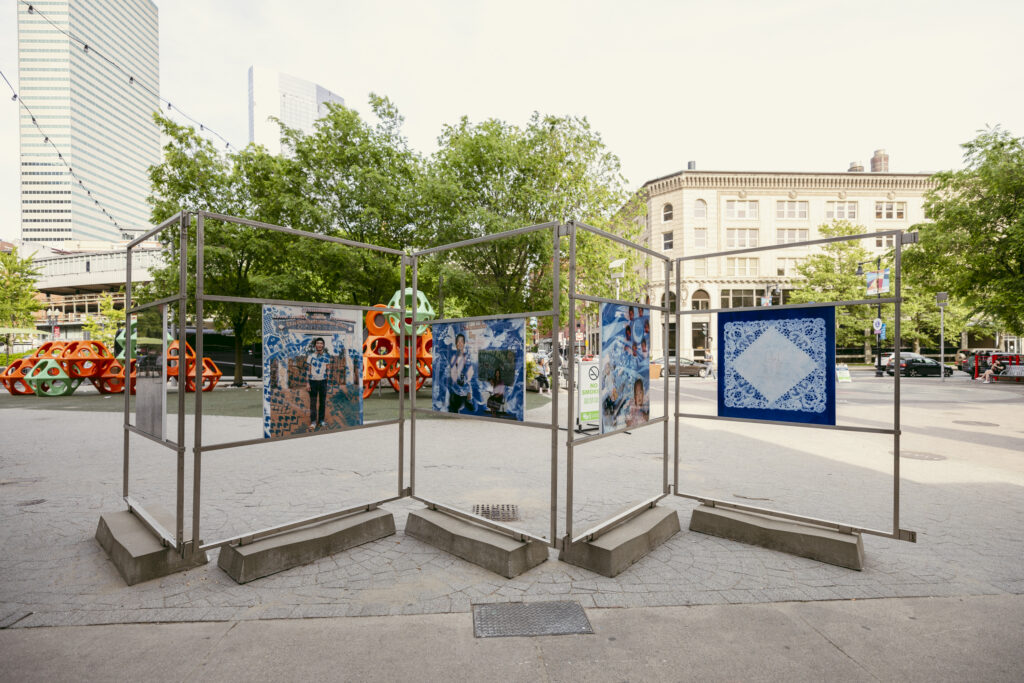
Designed by Los Angeles-based artist Misa Chhan (they/them), Year of the Snake is a two-part installation composed of 20 flags and 10 aluminum prints that honor the legacy and resilience of Cambodian diasporic communities and the artist’s own family. To create each series of works, the artist drew upon a range of domestic materials –curtains, doilies, archival family photo albums, and furniture from their family home– and continued their exploration of the color blue via indigo dyeing and cyanotype processes. Taken together, Chhan’s installation explores how we make home and belonging through journeys from one country to another, from one realm to another, and even in the everyday transitions and changes from one moment to the next.
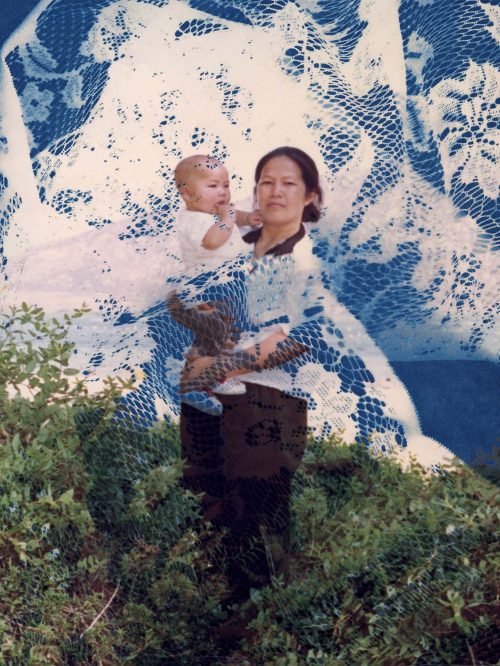
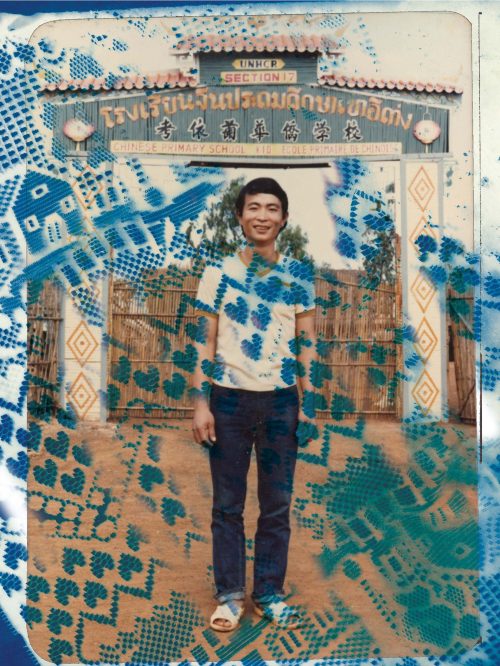
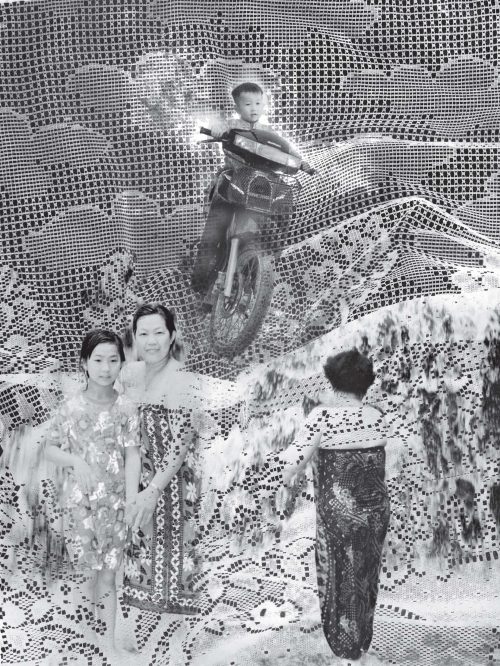
Displayed in an accordion format which echoes a common format for artist books, 10 photo-collage aluminum prints tell the story of Chhan’s parents, who immigrated to the United States from Cambodia to escape the brutality of war under the Khmer Rouge regime. The artist selected images of their parents in refugee camps learning English as a Second Language, raising the artist and their siblings in Section 8 housing, and learning how to run a donut business. Like thousands of families in the Cambodian diaspora, Chhan’s family joined the West Coast donut business community as a pathway to obtaining immigration sponsorship and making a living in the United States.
Cyanotype prints made from vintage curtains wrap and partly cover the photographs in a hazy, dream-like way, as though the breeze was blowing through a window, nodding to the domesticity of trying to nest and find home through memories. Domestic elements from the artist’s home life such as sewing, lace curtains, doilies, photo albums, and cross stitching, are utilized to further invoke home.
One print features an engraved traditional Cambodian Sak Yant tattoo used with permission by the Federation of Khmer Sakyantra. This tattoo is a combination of 5 elements: water for peace, calm, and good luck; earth for protection, prevention, and grounded health; fire for strength, energy, and power; wind for strength, energy, and support; space for meditation and peace of mind.
The intention of the engraving is to allow the viewer to participate and create a talisman of the five elements by creating a rubbing of the drawing.
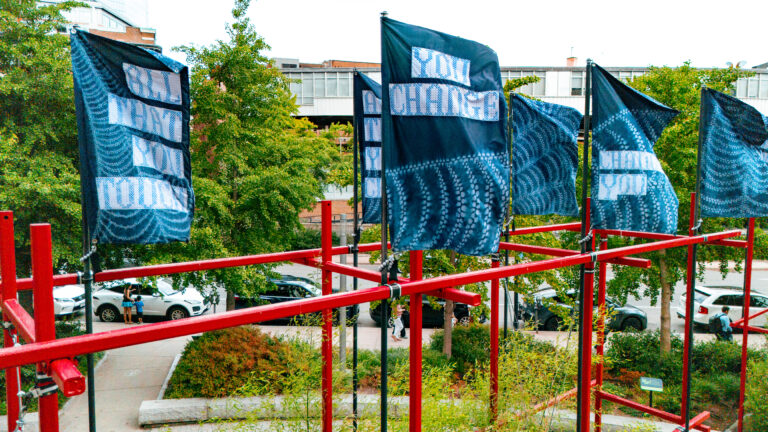


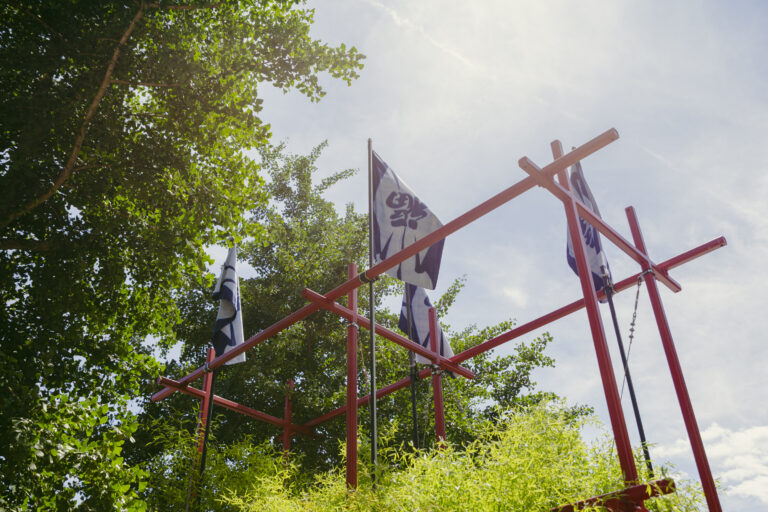
Across 10 cyanotype-printed flags, Chhan positioned the Chinese character, fu, meaning ‘blessing’ and ‘luck’, between the double imprint of a headboard made by the artist’s father. Digitally manipulated to appear upside down, the character fu is commonly hung in this way so that blessings may pour into the receiver’s life and as a wish for prosperity to descend upon a dwelling. In this work, Chhan honors their father who passed on five years ago. For the 10 indigo-dyed flags, the artist drew inspiration from Octavia Butler’s iconic speculative fiction novel Parable of the Sower. Set in a post-apocalyptic Earth heavily affected by climate change and social inequality, a main tenet within the novel is “The only lasting truth is Change,” meaning that change is the fundamental reality, and humans can shape and direct it, rather than relying on a divine being for guidance. Chhan stitched this quote atop an indigo shibori-dyed spider web –a symbol of strength, community, and connection– all things that help us survive and thrive through change.
Location:
Previous Work
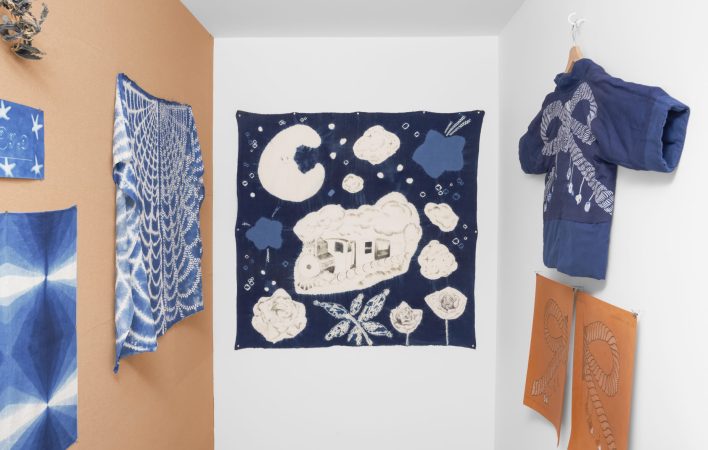
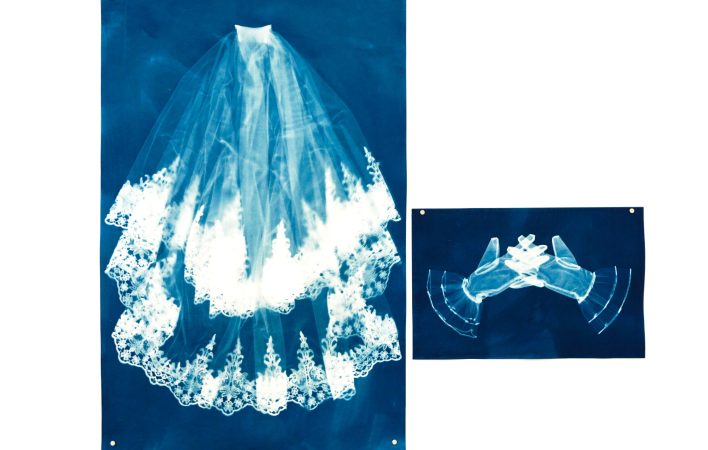
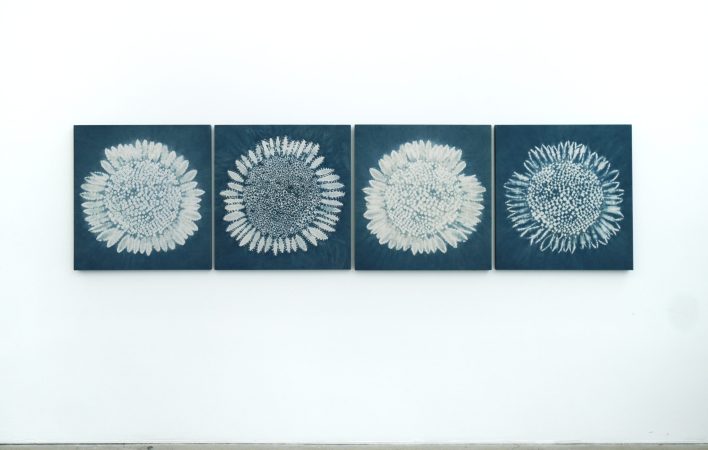
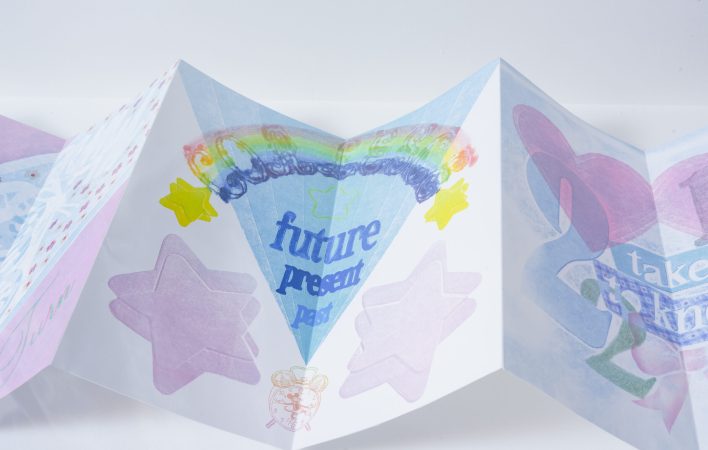
About the Artist
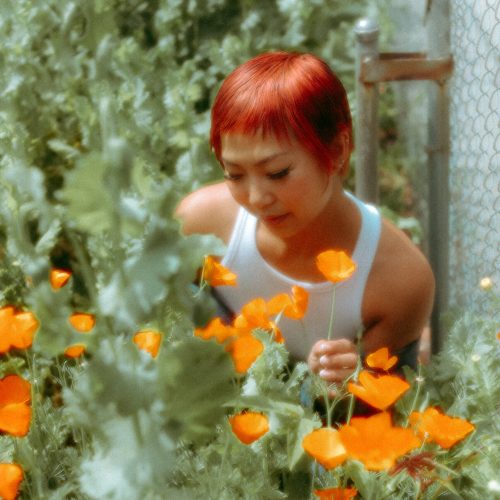
Misa Chhan (they/them) is an artist and natural dyer who lives and works in Los Angeles. They work across natural dyes, textiles, fibers, kites, printmaking, and artists’ books. Drawing upon their background in book arts, printmaking, and papermaking, they began to explore natural dyes as a medium to stay engaged with and learn from the natural world. The mindset of domination over nature creates a scenario where humans feel detached from nature as opposed to understanding that we are fundamentally dependent on it; Chhan’s goal is to show how we work in collaboration with the environment and our interconnectedness to all living things. They spend their time gardening, practicing how to coax color from plants, composting, and researching natural dyes and minerals and how to integrate them in their daily life. Chhan earned their BA in Book Arts at University of California, Santa Barbara in 2013.
Artist Statement
Following nature’s lead is the compass for my work. I am inspired by nature, the quotidian, folk art, ancient craft, and migrant resourcefulness. For example, the majority of my natural dye materials are collected food waste or dyeplants grown from seed in my mother’s front yard. I grow Marigolds, Coreopsis, Madder, Weld, Cosmos, Woad, and Indigo (Persicaria tinctoria) at home to tenderly coax color and dye from them. Utilizing ancient craft methods helps to establish links between past and present practitioners, allowing me to participate in premodern processes connected to human evolution. This practice feels revolutionary in a society that glorifies hyperconsumption and disposability. I am influenced by Delcy Morelos, whose use of natural materials like textiles, fibers, clay, and soil asks us to consider earth as a living entity rather than a territory to be owned. My work serves as a foil to the Western mainstream narrative that seeks to dominate nature, highlighting instead our fundamentally interdependent relationship with the natural world. It is an organic extension of a life lived in harmony with nature. For me, tending to a garden is akin to receiving an instruction manual for how to move through daily life. I hope to analyze the ontological tension between craft as a means of production and anti-consumption ethos, particularly vis-à-vis the domestic realm, the natural landscape, and the built environment.
My work investigates themes of queer intimacy, protection, being held, not having to hold oneself, suffering, pain, love, joy, discipline, fantasy, restriction, and freedom. My practice in all of its configurations formalizes these themes through the materiality and physicality of working with fiber and nature.
A Special Thank You to Our Supporters
A Special Thank You to Our Supporters
Project support for Year of the Snake is provided by TD Charitable Foundation, Holland America, and the City of Boston.
Public Art on The Greenway is made possible with major support from the Barr Foundation, Goulston & Storrs, the Greenway Business Improvement District, the Mabel Louise Riley Foundation, Meet Boston, the Wagner Foundation, the National Endowment for the Arts, and the Richard K. Lubin Family Foundation.
Additional support is provided by the Deborah Munroe Noonan Memorial Fund, Bank of America, N.A., Trustee.
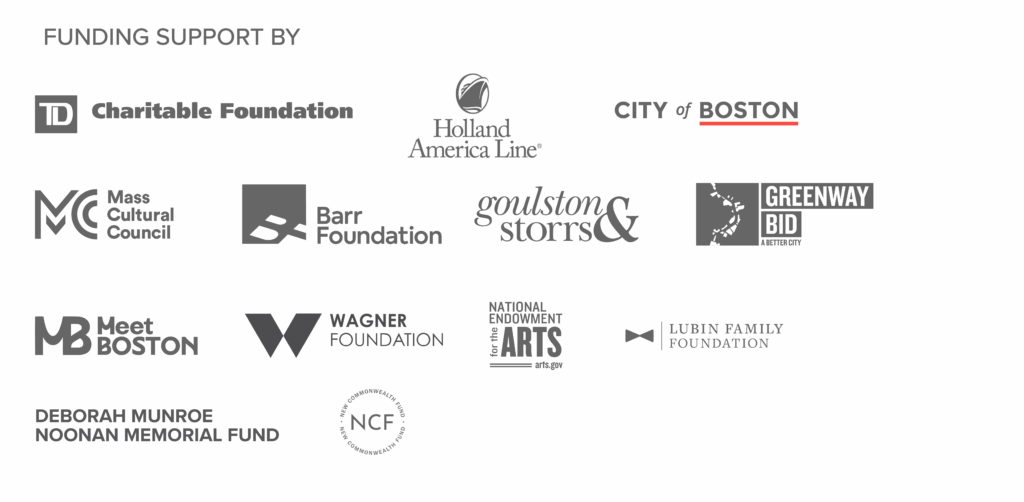
About The Greenway and the Conservancy
The Greenway is a contemporary public park in the heart of Boston. We welcome millions of visitors annually to gather, play, unwind, and explore. The Greenway Conservancy is the non-profit responsible for the management and care of The Greenway. The majority of the public park’s annual budget is generously provided by private sources.
The Greenway Conservancy Public Art Program brings innovative and contemporary art to Boston through free exhibitions that engage people in meaningful experiences and dialogue with art, each other, and the most pressing issues of our time. Past Greenway exhibitions can be viewed on the Public Art Instagram (@greenwaypublicart) or The Greenway website (https://www.
